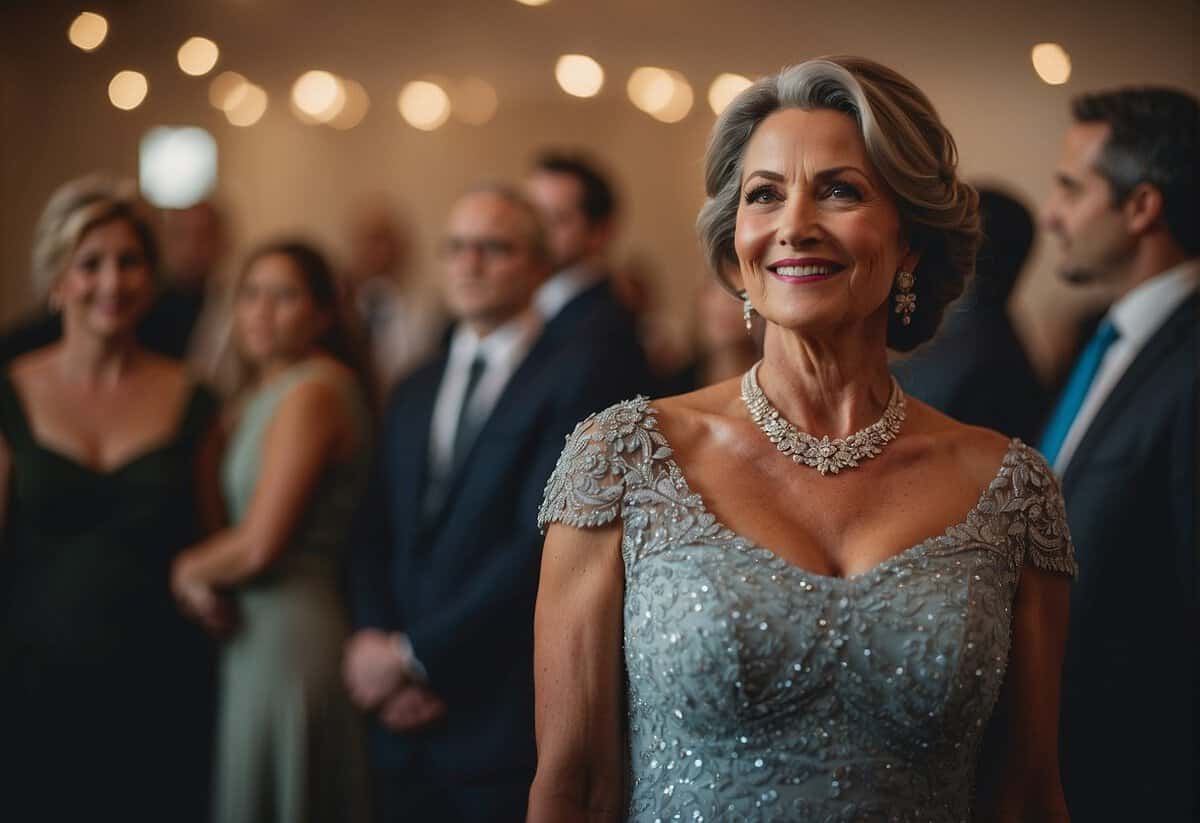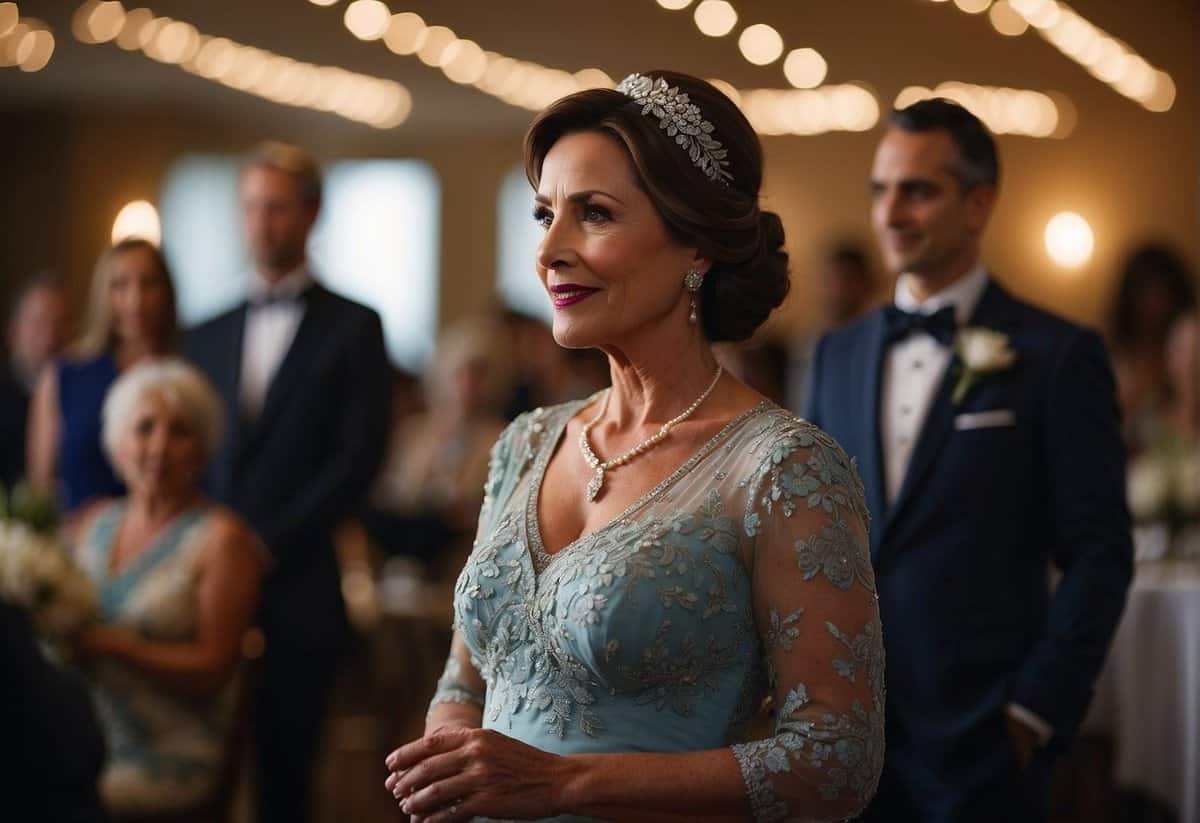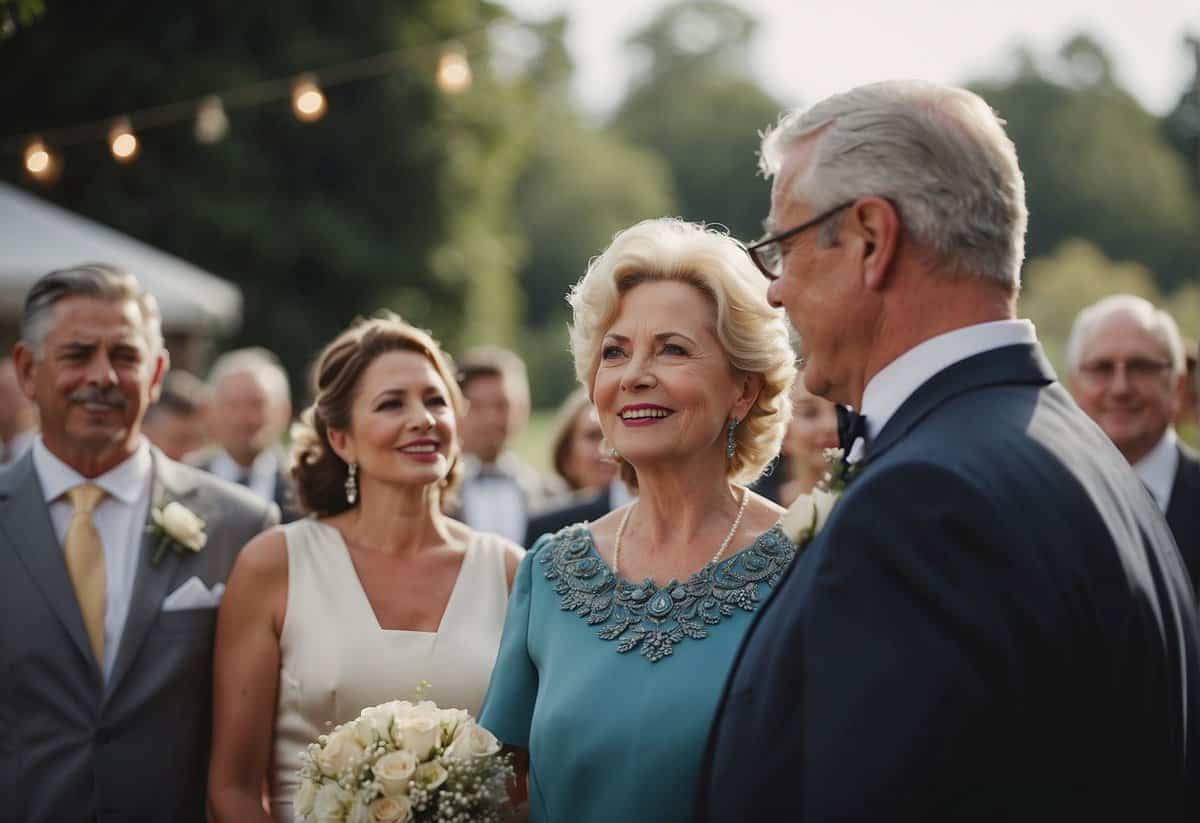Is Mother of the Bride More Important Than Mother of the Groom? Unveiling Wedding Etiquette
Weddings are a time of joy and celebration, and they also bring about the union of not just two individuals but their families as well. This union often puts two very important figures in the limelight: the mother of the bride and the mother of the groom. While the mother of the bride traditionally plays a significant role in the wedding planning process, it raises the question of where the mother of the groom stands in the hierarchy of importance.

It’s essential to understand that both the mother of the bride and the mother of the groom have their unique places in the celebration. Each has roles and responsibilities that are shaped by tradition and the dynamics of the particular families involved. Etiquette and traditions can vary significantly, highlighting that importance cannot be measured merely in tasks or visibility during the wedding.
Key Takeaways
- Both the mother of the bride and mother of the groom hold significant roles in the wedding.
- Their importance is equitable and complementary, rooted in tradition and family dynamics.
- Attire and etiquette for both mothers should be cohesive and respectful of the wedding’s theme and tone.
Roles and Responsibilities

In a wedding, both the mother of the bride and mother of the groom hold distinct roles that contribute to the smooth progression of the event. You’ll see differences in responsibilities related to planning, etiquette, and attire, all of which are crucial to understand.
Planning and Hosting Duties
Your role in planning and hosting can vary greatly depending on your position as the mother of the bride or mother of the groom. As the mother of the bride, you may find yourself deeply involved in the wedding planning process. This often includes:
- Offering emotional support and advice during the planning stages.
- Assisting with selecting the wedding dress and other attire.
- Hosting or co-hosting pre-wedding events, such as the bridal shower.
- Greeting guests and acting as a hostess at the wedding and reception.
On the other hand, as the mother of the groom, some key responsibilities could be:
- Communicating with the mother of the bride to understand the wedding theme and style.
- Hosting the rehearsal dinner is traditionally seen as a mother-of-the-groom duty.
- Offering support and assistance where needed, while also respecting the mother of the bride’s role.
Both roles are guided by etiquette to ensure harmonious collaboration and to celebrate the couple’s journey.
Wedding Attire and Style
When it comes to attire and style, both mothers are expected to dress elegantly and in accordance with the wedding’s formality. Here are some specifics:
- Mother of the bride: Typically, you get first pick on your dress’s color and style. It’s customary to choose a color that complements the wedding palette but does not match the bridesmaids.
- Mother of the groom: After the mother of the bride selects her attire, you can choose yours. It’s polite to communicate with the bride and other mother to ensure your choice harmonizes with the wedding’s style.
Remember, your wardrobe choice is not just about aesthetics; it’s also a representation of your role and support on this significant day.
Etiquette and Traditions
When planning a wedding, it’s essential to consider the roles that family traditions and established etiquettes play. These guidelines help maintain respect and formality at various stages of the celebration, from the ceremony to the rehearsal dinner.

Ceremony Positioning
During the wedding ceremony, tradition often dictates where family members are seated. As the mother of the bride, you’re typically seated in the first row on the left side (when facing the altar), which is considered a place of honor. The mother of the groom sits on the right side, mirroring the bride’s family’s positioning, emphasizing the unity of both families.
Rehearsal Dinner Participation
The rehearsal dinner is usually hosted by the groom’s family, a tradition that underscores their active participation in the wedding. Your role as the mother of the groom includes organizing this event at a chosen venue, extending invites, and ensuring the dinner reflects the desired formality of the pre-wedding celebrations. Your involvement symbolizes respect for the couple’s union and contributes to the joyous anticipation of the wedding day.
Attire Guidance
When preparing for a wedding, selecting the appropriate attire is crucial for both the mother of the bride and the mother of the groom. The goal is to reflect the importance of your role while respecting the wedding’s aesthetic.

Color and Dress Code
Your mother of the bride dress or mother of the groom dress should be chosen with the wedding colors and dress code in mind. Consider elegant colors like ivory, navy, champagne, pink, gray, silver, or gold that complement but don’t outshine the bridal party. It’s important to ensure that your dress does not clash with the color scheme of the wedding. For example, if the bridesmaids are wearing light blue, a navy dress would be harmonious yet distinct.
- Dress Code Insight:
- Formal/Black-Tie: Full-length gowns are appropriate.
- Semi-Formal: Cocktail dresses or tea-length dresses fit well.
- Casual: A dressy blouse and skirt could suffice.
Shopping and Fitting Process
Start your dress shopping process early to allow time for necessary alterations. Schedule your dress fittings at a time close to the wedding to ensure your attire fits perfectly, considering any possible body changes.
- Fitting Tips:
- Schedule the first fitting at least 2–3 months before the wedding.
- Aim for the final fitting to be 2–3 weeks before the event.
Remember, while you want to look your best, the comfort and fit of your dress will enable you to enjoy the special day fully.
Interpersonal Dynamics

In the landscape of wedding planning, effective communication and respect are the twin pillars that hold up the relationship between the mother of the bride and the mother of the groom. Misunderstandings and crossing boundaries can lead to unnecessary drama, but with clear communication and mutual respect, both mothers can offer unparalleled support to the bridal party.
Communication with the Bridal Party
Your role in communicating with the bridal party, including the bridesmaids and the maid of honor, is vital. Ensure you discuss plans and responsibilities clearly, avoiding assumptions. This isn’t just about keeping everyone on the same page, but also about fostering a supportive environment where every member of the party feels valued and heard.
- Initiate Open Dialogue: Make an effort to start conversations that enable both mothers and the bridal party to share ideas and feelings openly, without judgment.
- Active Listening: When members of the bridal party speak, listen attentively. This shows that their thoughts and contributions matter.
Setting Boundaries with Respect
Setting boundaries is essential, but doing so with respect ensures that relationships are maintained and drama is minimized. Remember, while the mother of the bride often has a significant role, it doesn’t overshadow the importance of the mother of the groom.
- Express Expectations: It’s helpful to discuss and agree upon your level of involvement from the outset to prevent overstepping later on.
- Respect Differences: Acknowledge that each mother might have her own way of doing things. Celebrate those differences instead of letting them become points of contention.
Always keep in mind that weddings are a special time for both families, and finding a balanced and collaborative approach will contribute to a memorable event for everyone involved.
Frequently Asked Questions

When preparing for a wedding, understanding etiquette and expectations is essential. This section addresses common inquiries to help both the mother of the bride and the mother of the groom feel confident in their roles.
What are some suitable dress options for the mother of the groom?
For the mother of the groom, attire options can range from elegant gowns to sophisticated suits. If you prefer a gown, consider a style that reflects the formality of the wedding, such as a halter gown for a black-tie event or a cocktail dress for a semi-formal affair.
How can the mothers of the bride and groom coordinate their outfits?
Coordination is more about complementing than matching. You might choose a color that harmonizes with the wedding palette without being identical to the bridesmaids’ dresses. Communication between mothers can ensure a cohesive look without duplicating outfits. Explore different approaches such as incorporating a favorite flower or choosing a complementary color for accessorizing.
What roles and responsibilities does the mother of the groom have during the wedding?
The mother of the groom traditionally supports the couple and provides input when asked. She may assist with the rehearsal dinner and other pre-wedding festivities. On the wedding day, she should trust the vendors and not micromanage, freeing herself to enjoy the celebration.
Are there any specific colors the mother of the groom should avoid wearing?
It’s usually advisable to avoid white, cream, or ivory, which are reserved for the bride. Also, overly bold patterns or colors that clash with the wedding’s theme might detract from the wedding’s aesthetic. If the bride has any specific requests, it’s best to honor those preferences.
What are appropriate gift ideas for the mothers of the bride and groom?
Gifts that express gratitude and recognize the mothers’ contributions are highly appreciated. Personalized keepsakes or jewelry, a heartfelt letter, or an experience they can enjoy post-wedding are thoughtful options. Ensure that any gift is considerate of their tastes and preferences.
What fashion advice is there for mothers of the groom over 50?
Mothers over 50 can opt for elegance with a modern twist, focusing on comfort without sacrificing style. Choose well-tailored outfits that flatter your figure, and don’t shy away from incorporating contemporary trends or subtle embellishments if they appeal to you.

